Best Long Term Trading Strategy for Forex in 5 Steps

There are many reasons why I believe a long-term trading strategy for Forex will set you up for success. More so than using smaller time frames to trade, and I will get into several of those reasons within this article.
I lay out a few of those reasons in a light-hearted tone in my Scalp vs Swing Article. This article has gotten a lot of attention. First, I want to clarify that when I say “Long Term” I mean, at least, looking at the daily charts. Ideally, a long-term Forex trading strategy has many parts that all come back to user analysis.
Before we begin, we want to welcome you to Trading Strategy Guides. You have come to the right place to learn everything you need to become successful in Forex Trading. Here are a few articles that may help you get up to speed if you’re a new Forex Trader:
- What Is Trading: Beginner’s Guide To Financial Markets
- Forex Trading For Beginners
- Day Trading For Beginners
- Prop Trading For Beginners
Thanks for your patience, let’s continue learning the best long-term trading strategy!
Table of Contents
Introduction: Long-Term Trading Strategy for Forex
I believe that one of the big issues with Forex traders today is that they are so caught up in short-term trading and scalping. Which, I really do have a hard time believing traders can be profitable (there are some exceptions). They don’t even recognize what long-term trading is.
I have had many traders say something like this to me, “I want to begin looking at the best long-term forex trading strategy because scalping has not worked for me. I am now using a long-term strategy, trading the hourly charts.”
I think the above statement is one of the issues with Forex Traders today. And why so many have a lot of trouble being profitable. Learning this type of trading is one way you can learn how to become a successful Forex trader. One thing you should consider is whether you want to execute a long-term trading strategy or focus on a short-term trading strategy.
For some reason, the majority of traders—especially beginners—are so bent on scalping. They don’t even have a realistic idea of what long-term trading is. I know my friend, Zaheer, will agree with me on this one.
Again, when referring to, “Long Term Trading,” I mean using Weekly charts (and Monthly) as your guide to set up potentials and targets. Then, perhaps, use a lower time frame to actually execute the trade for more precision.
Make sure to also check out our guide to Forex trading for beginners!
Before I get into the actual strategy, I want to dig a little more into why the right perspective is important when it comes to trading long-term strategies. I know that many of you only care about the actual strategy guidelines, but I believe that the following information about perspective and a holistic approach is more important than the strategy guidelines. Comment below if you agree/disagree with me on that. You can also read a million USD forex strategy.
Long-Term Trading Strategy 4-Hour Chart
As an example of how this “Short Term Mindset” can get you into trouble, let’s take a look at the EUR/USD.
Someone looking at the EUR/USD on a 4HR chart would see something like this:
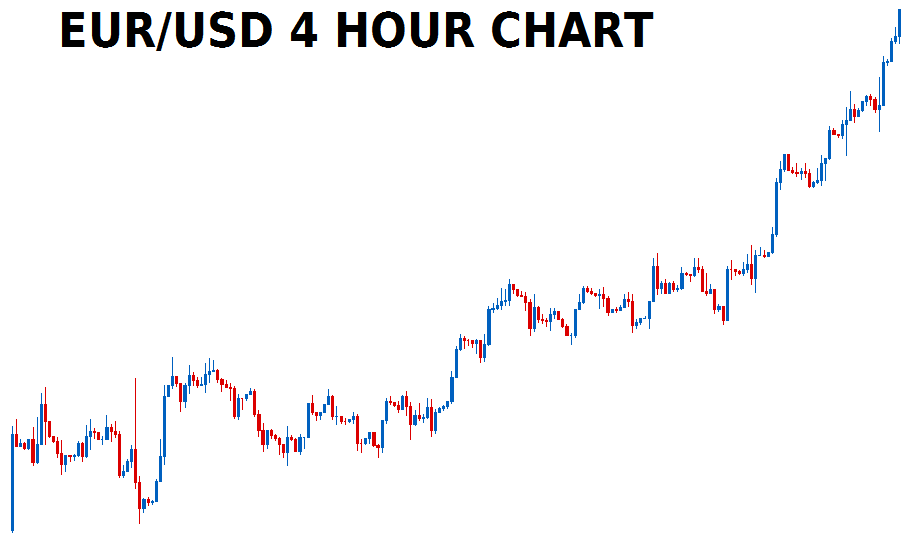
In the above chart, you see that there is a lot of bullish momentum moving toward higher highs. From this perspective, it looks as though all bullish continuation set-ups will be great entries.
Long-Term Trading Strategy Weekly Chart
However, a longer-term view of the EUR/USD at the same exact time tells a different story:

You can see by looking at the Weekly chart, that the EUR/USD is in a long-term forex trading strategy downtrend. You’ll notice the bullish rally on the 4HR chart is just a pull-back rather than a raging trend as it appeared before. Also, read the weekly trading strategy that will keep you sane.
Not only is it a pullback, but it is a pullback heading into unsuspected resistance. It is unsuspected if you only look at the 4HR and don’t realize what is going on long-term. If you want to earn good revenue from our long-term trading strategy, I recommend you try looking into prop firm trading.
If we move a little bit ahead in time, you can see a bearish bounce off the resistance level. To the trader viewing only the 4HR chart, this may look like a great time to buy again in anticipation of a Bullish trend continuation. One of the best time frames for a great Long term trading strategy is a multi-time frame analysis.

What the 4HR trader may not realize is that this is not a pullback of the 4HR trend. Rather, it is a continuation of the Weekly trend. Where the long-term trader sees obvious Bearish continuation potential, the short-term trader thinks this is “just a pullback.”
To the 4HR trader, this looks like an unexpected major reversal in the market. To a long term trader, it is an obvious and expected continuation of market flow. It looks like this in the Weekly view:
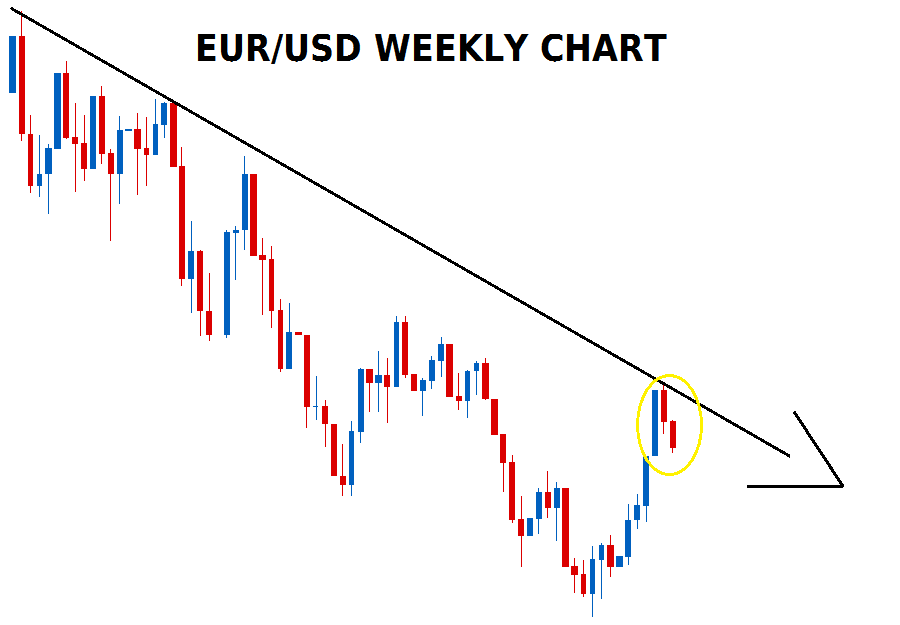
This is why it is so important to have a long-term view of the market. Especially if you are going to call yourself a long-term trader. Again, so many people looking at 4HR charts think they are long-term traders. But they are ignoring the real long-term time frames. Ignoring this can get you into big trouble, just like in this real-life example. Those two bearish weekly bars you see would crush someone trying to take long positions on the 4-Hour chart. Yet they are just part of the flow in the Weekly view.
Now, I am not saying that you cannot trade profitably on the 4HR charts. I am saying that it is very difficult to make consistently profitable trades when you do not have a good perspective of the market’s longer-term movement. Especially when trying to trade an intermediate time frame like the 1 or 4-hour time frames.
With that said, let’s talk about my long term strategy for traders who want to be profitable and consistent! ????
One major note about this strategy is that you must be disciplined if you want to succeed. Yes, you need to be disciplined with all strategies to expect success. But in particular, if you want to trade a long-term strategy effectively, you must control your emotions and desire to, “get” into the market.
One of the biggest mistakes that unprofitable traders make is over-trading and over-managing their trades. As human beings, we have a desire for action and involvement. This tends to cause us to always want to have a trade open or always want to manipulate the trades we do have open. I can promise you that this will only lead to less and less profitability.
If you want to be successful using the long-term strategy that I am presenting to you, you must accept that there will not be a ton of entries. Which is a good thing, in my opinion. Also, accept that there will be no need to “jump in” to the open trade and manage it. Also, read about the best forex indicators.
Here is how the strategy works
1. Long-Term Trading Strategy: Start With Monthly and Weekly charts.
Look for trends on these longer-term charts that have good momentum in the respected direction. Something like this:
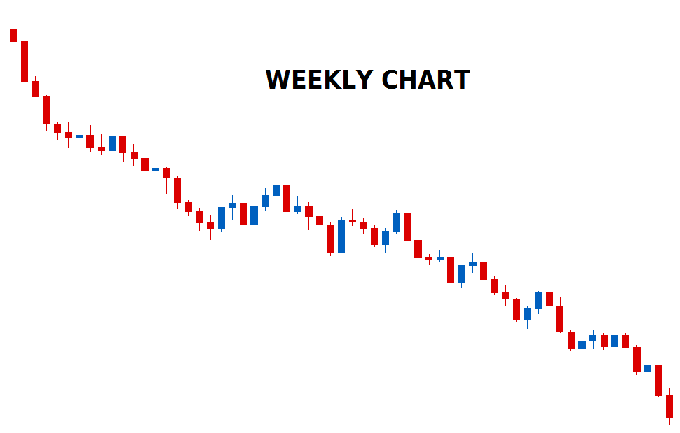
Identify the direction of the trend (bear or bull). Make a note to only look for entries in the direction of that trend (for instance, if it is a bullish trend, look for buys).
2. Long Term Trading Strategy Daily Chart and draw a Fibonacci Retracement from the current high to current low (or the other way around).
Here is how to draw a Fib Level for those that don’t know:
3. Look for pullbacks on the Daily time frame that are approaching the 38.2, 50.0, or 61.8 Fib Levels.
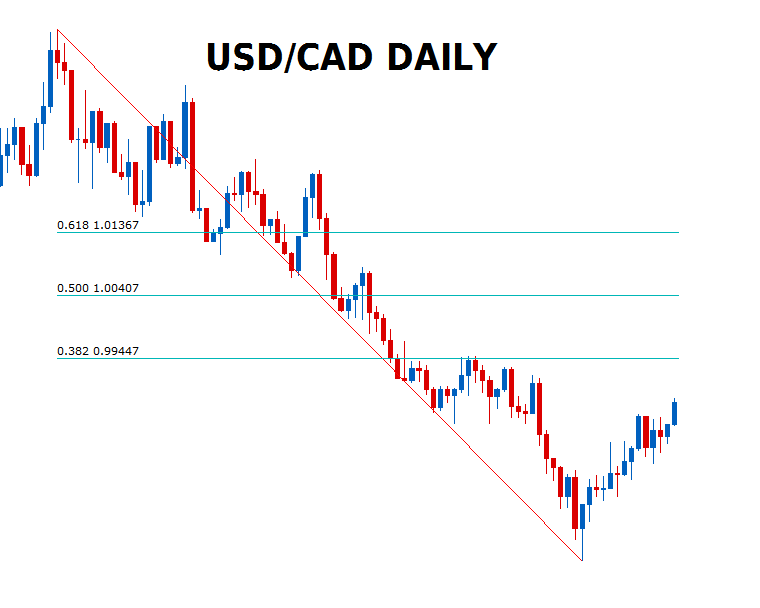
If the price is getting close to one of those 3 key fib levels, be prepared to make an entry.
4. Look for Candlestick Entry after Fib Level is Tested (touched by Price).
As soon as price touches a weekly Fib level, you are now in the “waiting for signal” mode. In other words, the criteria has lined up for you to make a trade, now all you need is the signal to confirm your forecast. As I Casey Stubbs look at this I truly believe that this is best strategy for long term trading that you can learn. I recommend you test it out and then let us know in the comments on how it works for you.
For this strategy, the signal is a momentum daily bar in the direction of our long term trend. An ideal daily signal candle will have a tail that has tested (pierced through) the Fib level, but then reversed back into the direction of the trend:
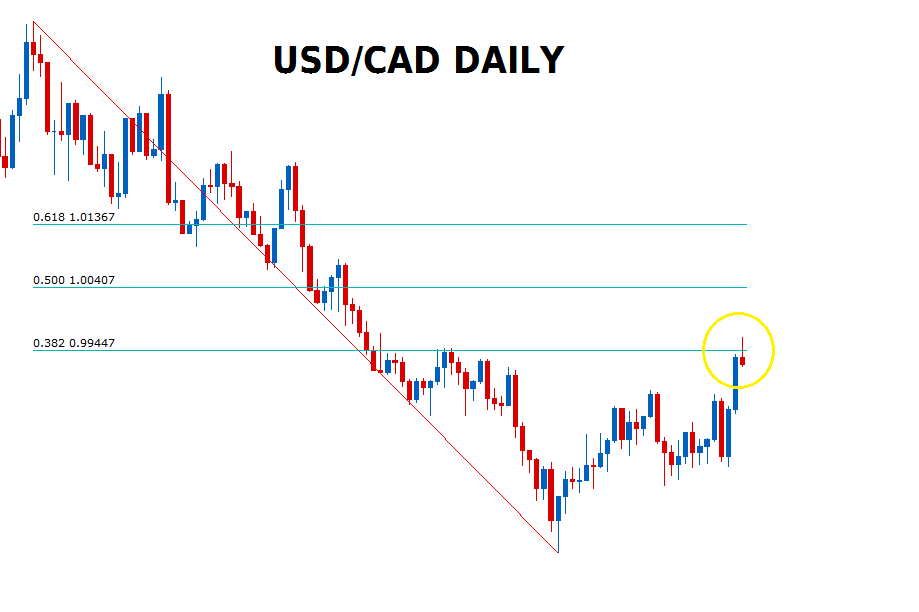
5. Take the entry. Place your stop and target. This is how a Long Term Trading Strategy comes to completion.
Here’s how…
6. Wait… then win or lose.
Just like I showed you in the video above; some trades win and some lose.
Don’t try to manage the trade or get fancy, just trust the strategy and let the trade be a winner or a loser. Trading is all about Math—a good strategy has winners and losers, but at the end of the year, the winners out-weigh the loser. They will in this strategy if you follow it with discipline! To help with the math, try the forex trading position size calculator tool.
Frequently Asked Questions:
We like to make this content as useful as possible, so we have added some frequently asked questions.
Which strategy is best for long-term investment?
A long-term investment strategy that emphasizes diversification, regular contributions, and patience is considered to be one of the best. This strategy involves investing in a mix of assets such as stocks, bonds, and real estate and regularly contributing to the portfolio over time.
This helps to reduce risk by spreading investments across different asset classes and dollar-cost averaging, which helps to reduce the impact of market volatility on the portfolio. Additionally, a long-term investment strategy should be based on an individual’s goals, risk tolerance, and time horizon. It’s always recommended to consult a financial advisor before making any investment decisions.
What is the most profitable trading strategy?
The most profitable trading strategy varies depending on market conditions, an individual trader’s goals and risk tolerance. However, a strategy that incorporates both technical and fundamental analysis, risk management, and a well-defined plan is often considered to be profitable.
For example, swing trading, which involves holding positions for several days to take advantage of short-term market trends, can be profitable when combined with proper risk management, such as setting stop-loss orders.
Another example is trend following, which involves riding the trend of the market and exiting when the trend reverses, can also be profitable when combined with proper risk management. It is important to note that there is no one-size-fits-all strategy, and what works for one trader may not work for another.
It’s always recommended to backtest and practice the strategy with a demo account before trading with real money.
Is long-term trading profitable?
Long-term trading can be profitable, as it allows traders to take advantage of long-term trends in the market and potentially compound returns over time. However, it’s important to note that long-term trading is not a get-rich-quick scheme and requires patience, discipline, and a well-defined trading plan.
Additionally, a long-term trading strategy should align with an individual trader’s goals, risk tolerance, and trading style. It’s important to diversify the portfolio across different currency pairs and timeframes to reduce risk, and stay up-to-date with economic and political events that may affect currency prices. However, it’s also important to keep in mind that past performance does not guarantee future results, and no trading strategy is foolproof.
What is the 90 rule in trading?
The 90 rule in trading is a long-term trading strategy that involves cutting losses quickly and letting profits run. The rule states that when a trade is entered, a trader should set a stop-loss order at a level that is no more than 90% of their account equity. This helps to limit potential losses and protect the trader’s account from large drawdowns.
Additionally, once a trade is in profit, the trader should use a trailing stop-loss order to lock in profits and let the trade run as long as the market conditions remain favorable. This strategy is based on the principle that it is better to cut small losses quickly and let large gains run, in order to maximize the overall profitability of the trading account.
Hope you guys enjoyed learning one of my favorite long-term strategies. Please leave a comment with any feedback.
Comment if you plan on trying the strategy, or comment if you hate the strategy!
Either way, I’d love to get your feedback!


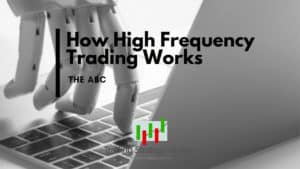




Very good article. Makes a lot of sense. I will give it a shot.
Thanks Imino, appreciate you taking a look and giving it a try–please let me know how successful you are using it.
An interesting read and you are right about the benefits of long term trading and also how novice traders misunderstand what long term trading actually is. I have some questions regarding the strategy.
1. How often do you see the signal bar set up exactly like that say put of 20 retracements?
2. How do you work out your risk?
3. How many times do you enter in on the trend as it progresses?
4. What is the average number of pips you have taken using this strategy?
Hi Zaheer, thanks for reading and leaving some feedback.
Let me address your questions:
1. This “pin bar” occurs pretty often, about 30% of the time I’d say, because often times price moves slightly through the major level before reversing back to respect the level.
2. I typically use a risk of .5% per trade, but if my trade management strategy includes potentially adding to the trade, then I would adjust the risk to make sure that I don’t have risk of more than 1% open at one time.
3. In this strategy, I am not typically going to add to the trade if it does continue in the larger trend direction, because my target is going to be too short to use that methodology. In order to make the strategy as high probability as possible, I am only targeting the “bounce” to the next major level which is not normally going to be far enough away for me to begin adding positions in my favor.
4. The pip gain on the “bounce method” changes drastically depending on the pair and the largeness of the swing that you are using the fib retracement on. For instance, if the swing is several thousand pips (like a massive run on the GBP/NZD) the distance between the fib levels–which directly affects my stop and target–will be much much different than a 500 pip swing on the EUR/GBP.
Hope the above answers your questions appropriately.
Thanks again for reading and leaving a comment!
Nathan
Hi Nathan,
To me, this is excellent stuff with precious tips and avices (like going WITH the longer time frames trend, where to put stop-loss and target, avoiding entry if major level is too close from entry, …). I will definitely put that strategy into my trading plan !
What I love with you and Casey is your honesty and transparency (not ONLY showing winners but clearly saying and showing that we will loose too !).
I am always amazed with the quality of your articles and the knowledge you already have at your young age. How good wil you be at 30 or 40 !!!
Just one very basic question:
– how do you define and recognize a major level (do you always look at candle charts only to spot it ?) ?
Thanks so much for all your efforts in helping us trading with an edge.
Fabrice
Hey Fabrice. As always, thanks so much for your time and effort into learning and your constant appreciation–it means a lot to us. For me, candlesticks are definitely an important part of seeing levels.. One thing that speaks volumes to me are when there are repeated wicks of a candle that tried to pierce through a certain price level but continued to get rejected. This shows me that price has made multiple attempts to move to a higher (or lower) price but kept getting pushed back by the level. When this happens over days and weeks on these longer time frames, I know that this is a big, important level.. Then, what I look to do, is pair that with another level. For instance, if the major horizontal level also corresponds with a Fib from a recent swing or a current trend line, that adds even more value to the price level. Once I clearly identify these important levels, I just wait for price action to react to them and then attempt to take advantage of the reaction. If it is a trend line and horizontal combination and price rounds out right at the level and begins to continue the long term trend, I will certainly be looking to take that trend continuation trade because it is a high probability entry and, most importantly, I have very major level to protect me against price going against me even if it is trying to bounce the other way and retest the trendline/level/fib or whatever. For me, candlesticks help me “see” price the best, but that definitely does not mean they are the only way to trade profitably–it is just my personal preference and you should have your own preference too!
Excellent and simple strategy. Will be adopting this one
Thanks Olu, I appreciate you taking the time to read and leave a comment, and am really glad that the article may be of use to you!
Pretty good stuff Tracy…U a good honest Guy Compared to all the crapp out there in the Forex arena!…We appreciate u!….. MERRY CHRISTMAS & GOD BLESS !
HEY NATHAN, GOOD ARTICLE.
AS FAR AS LONG TERM VS. SHORT TERM, BEING SUCCESSFUL IS ABOUT FINDING WHAT SUITS YOUR PERSONALITY. WHEN I STARTED TRADING FOR A LIVING I THOUGHT DAY TRADERS WERE NUTS. I TRADED LONG TERM AND GOT KILLED BLEW UP 2 ACCOUNTS.
THEN I TRIED SHORT TERM AND FOUND IT SUITED MY PERSONALITY WAY BETTER. NOW I TRADE SYSTEMS USING 1HR, 15 MIN, 5 MIN AND 5 PIP RANGE BARS. I AM A DISCIPLINED BUT NOT A PATIENT ONE. THERE ARE THINGS YOU CAN PICK AND CHOOSE WHEN YOU TRADE, BUT YOU CAN’T IGNORE WHAT YOU ARE.
Hey Roy, thanks for reading and leaving a valuable comment! Yes, I do agree that understanding your personality is a big part of trading. To me, it is amazing that anyone can be profitable on smaller time frames because the room for error is so minute, but that is certainly very impressive on your behalf!
Thanks for this truly invaluable strategy,i really appreciate it.Pleasure is always mine.
Thanks Shivam, those are very kind words and I really appreciate you taking the time to read and leave a comment. Glad you enjoyed the article!
Very good article, Nathan! Yes, it is all valuable content. It goes with my observation and certainly has the edges required for winning.
Thanks for reading Sean! I appreciate you taking the time to leave a comment as well. I am very glad that you enjoyed the article!
Interesting. How many days/months do you usually go back to determine the down/uptrend?
Hey Anthony, thanks for reading and thanks for the comment! To determine the trend, I usually take a look at the weekly chart and take into account a year or so.. it depends on how long the current weekly trend goes back though, because if it has been trending for 3 years straight, then I will zoom out and take all of that into consideration.
I like your no b/s approach easy to understand and straight forwardness,hope to enjoy you next year.
Sincerely
David
Hey David, thanks very much for reading and leaving a comment. I appreciate the compliment and look forward to a lot more good stuff next year!